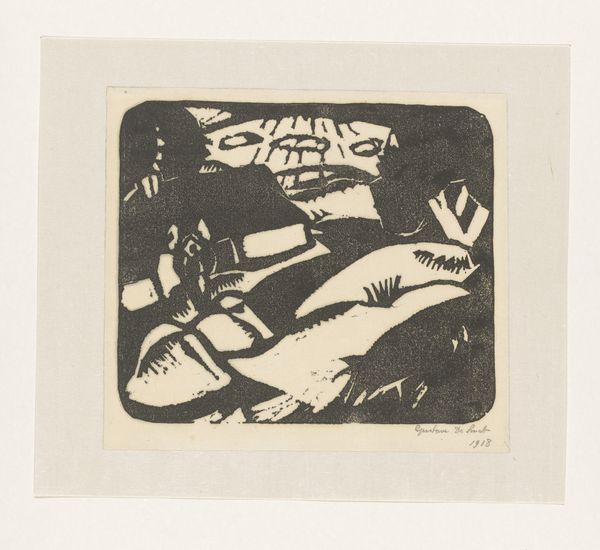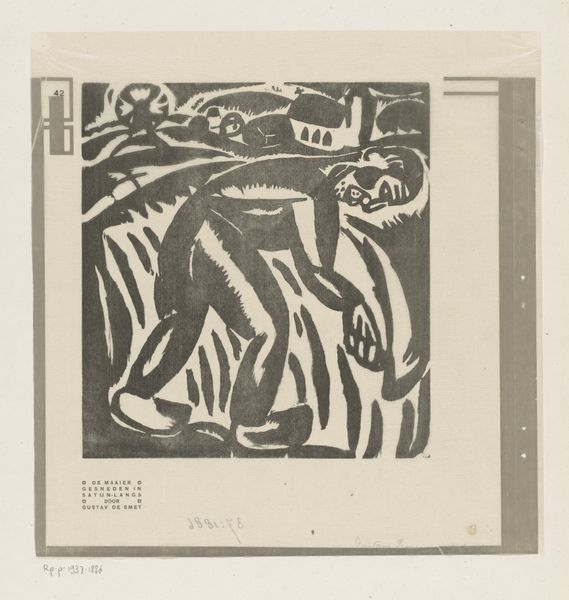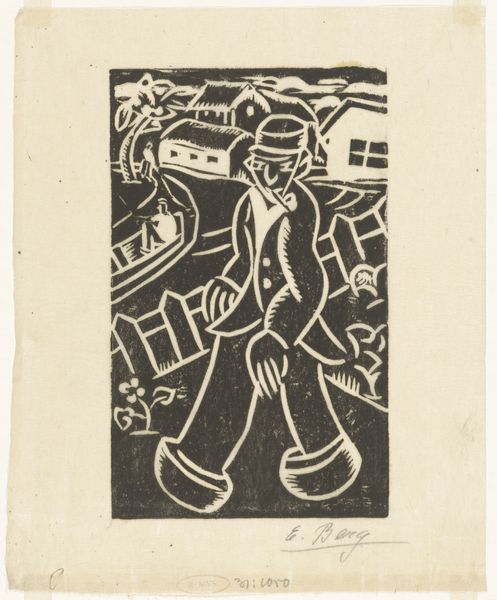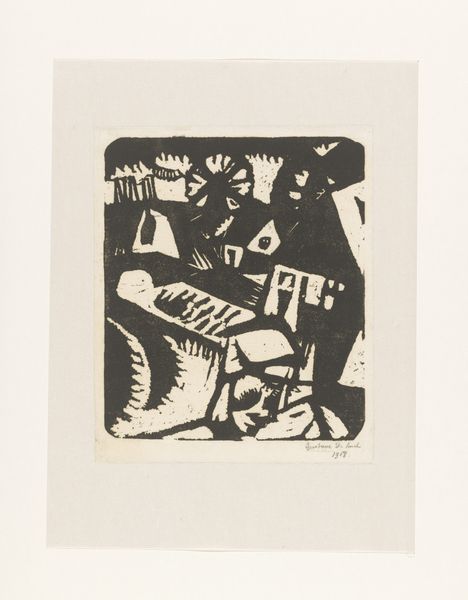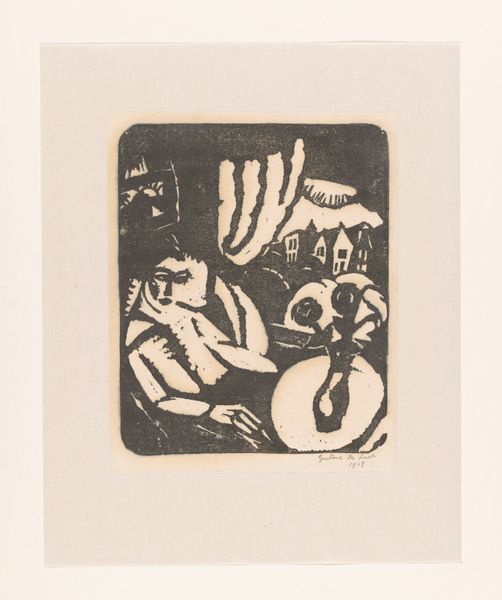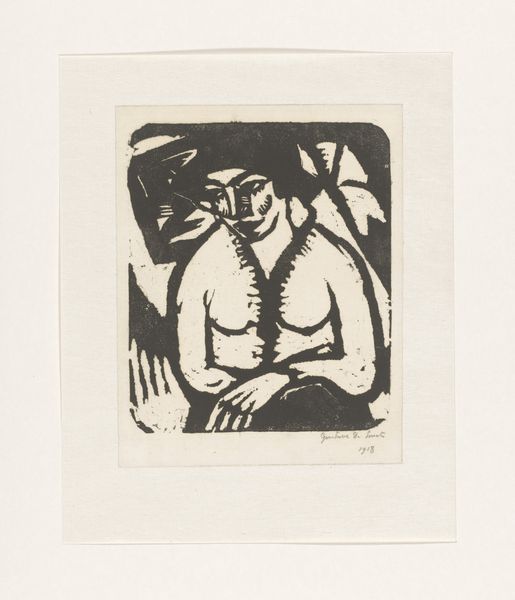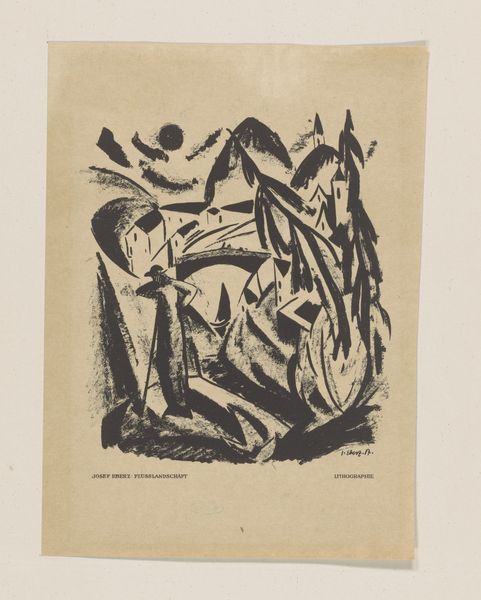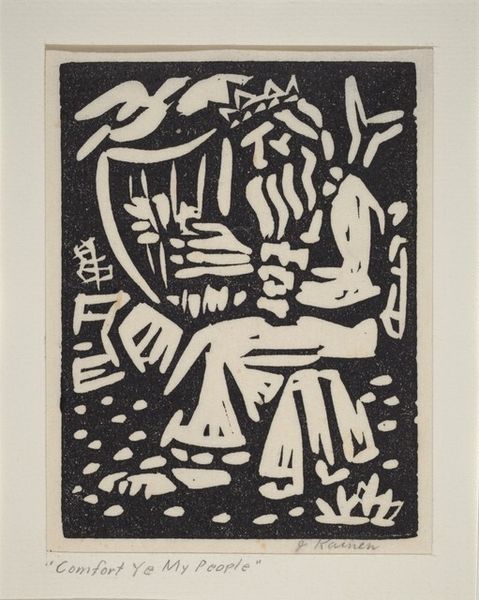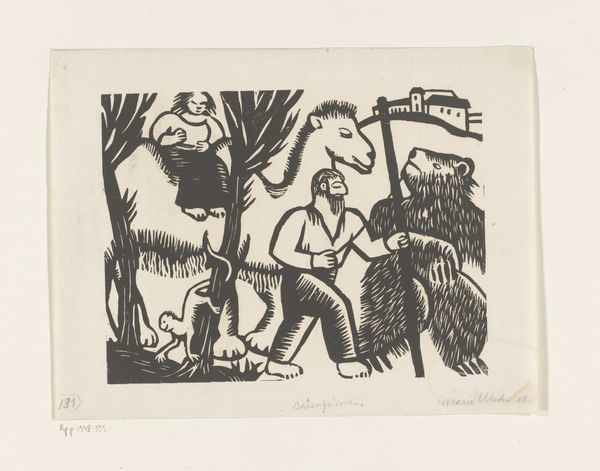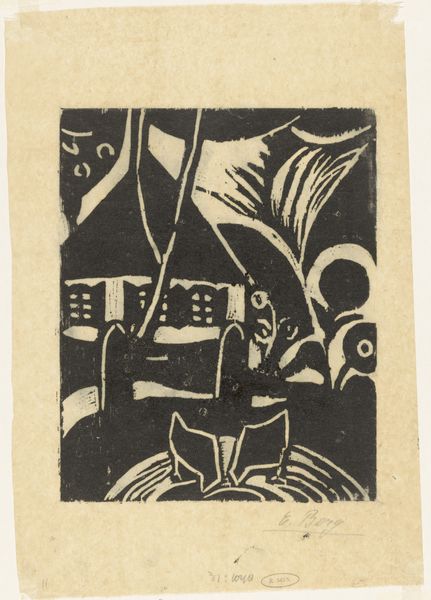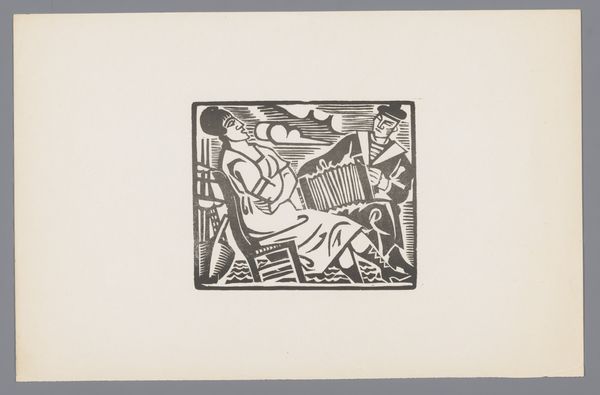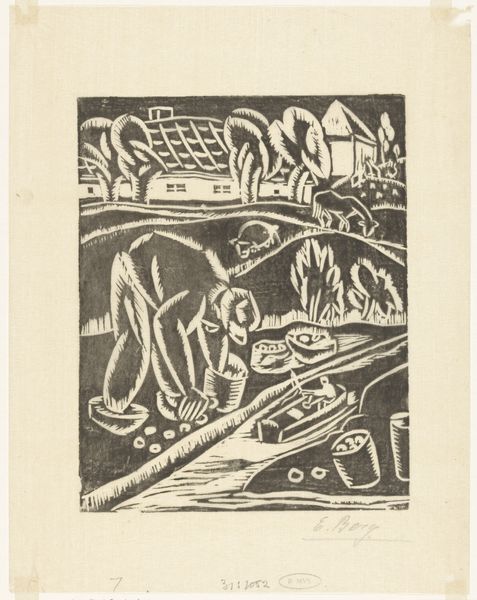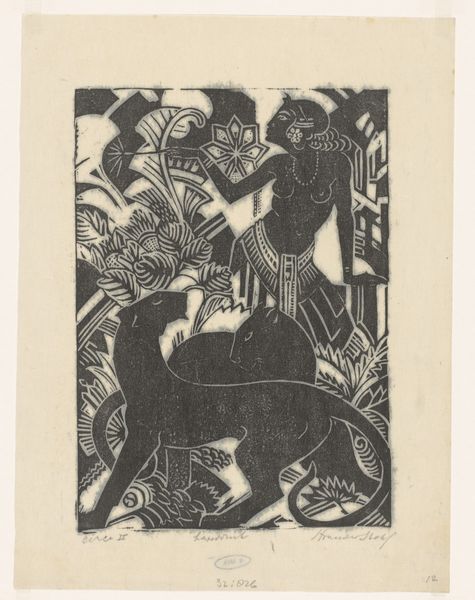
print, woodcut
# print
#
landscape
#
figuration
#
expressionism
#
woodcut
#
monochrome
Dimensions: height 232 mm, width 195 mm
Copyright: Rijks Museum: Open Domain
Editor: Right, so this is "Boer op het land", or "Farmer in the Field," a 1918 woodcut by Gustave De Smet. It's striking, the stark contrast, and there's something almost oppressive about the heaviness of the figure. How do you interpret this work, considering the period it was made in? Curator: Oppressive is a good word. What I see here isn't just a farmer working the land, but a symbol, perhaps unintended, of the weight of existence after the Great War. It’s almost like he’s shouldering the entire landscape, or maybe he's stuck _in_ the landscape! It resonates as expressionistic not just through its bold monochrome but through a raw kind of grief, do you think? I wonder if De Smet experienced trauma directly, it is certainly an emotional portrayal of labor. Editor: I do, especially knowing expressionism focuses on emotional experience. The rough lines contribute, almost like visible stress. What’s interesting is, that from a distance it looks abstract and blocky. Only by viewing it closely does one recognize a human shape – this contributes to the emotional heft. Is there something more there that can’t be ignored? Curator: Exactly. The landscape becomes an extension of his internal state – the furrows mirroring worry lines, the monochromatic palette echoing the grief, which became the language after this kind of world-shifting trauma. Notice, too, how the farmer seems to be merging with the landscape, as if losing himself in labor. And isn't there a power in simplicity too? So many prints around this period echo this somber simplicity... Did the heavy blacks weigh in? Editor: Definitely! The use of a stark palette intensifies the sense of burden. The blocky forms definitely draw your attention, and yes it becomes clear there's much being shouldered here in this artwork. Curator: Indeed. Perhaps in its starkness, De Smet accidentally stumbled upon a truth universally felt. What started out so literally resonates on this visceral, timeless, gut-wrenching human condition, wouldn't you say? Editor: Absolutely. It makes you consider everything behind even seemingly simple, representational art.
Comments
No comments
Be the first to comment and join the conversation on the ultimate creative platform.
